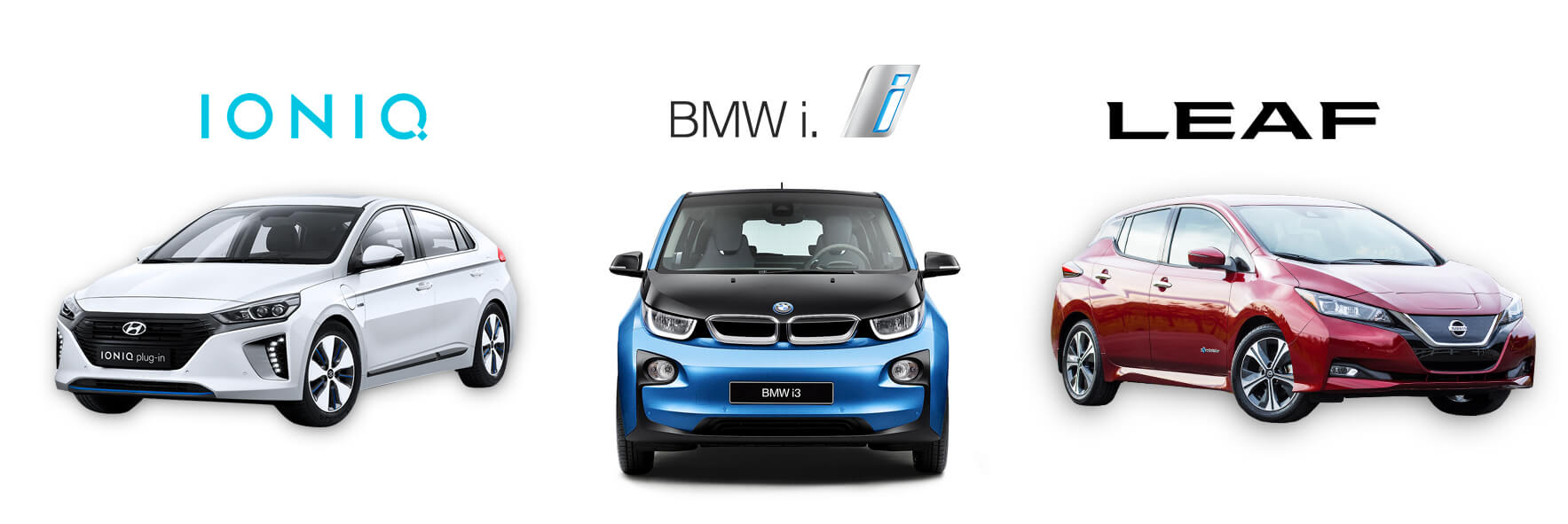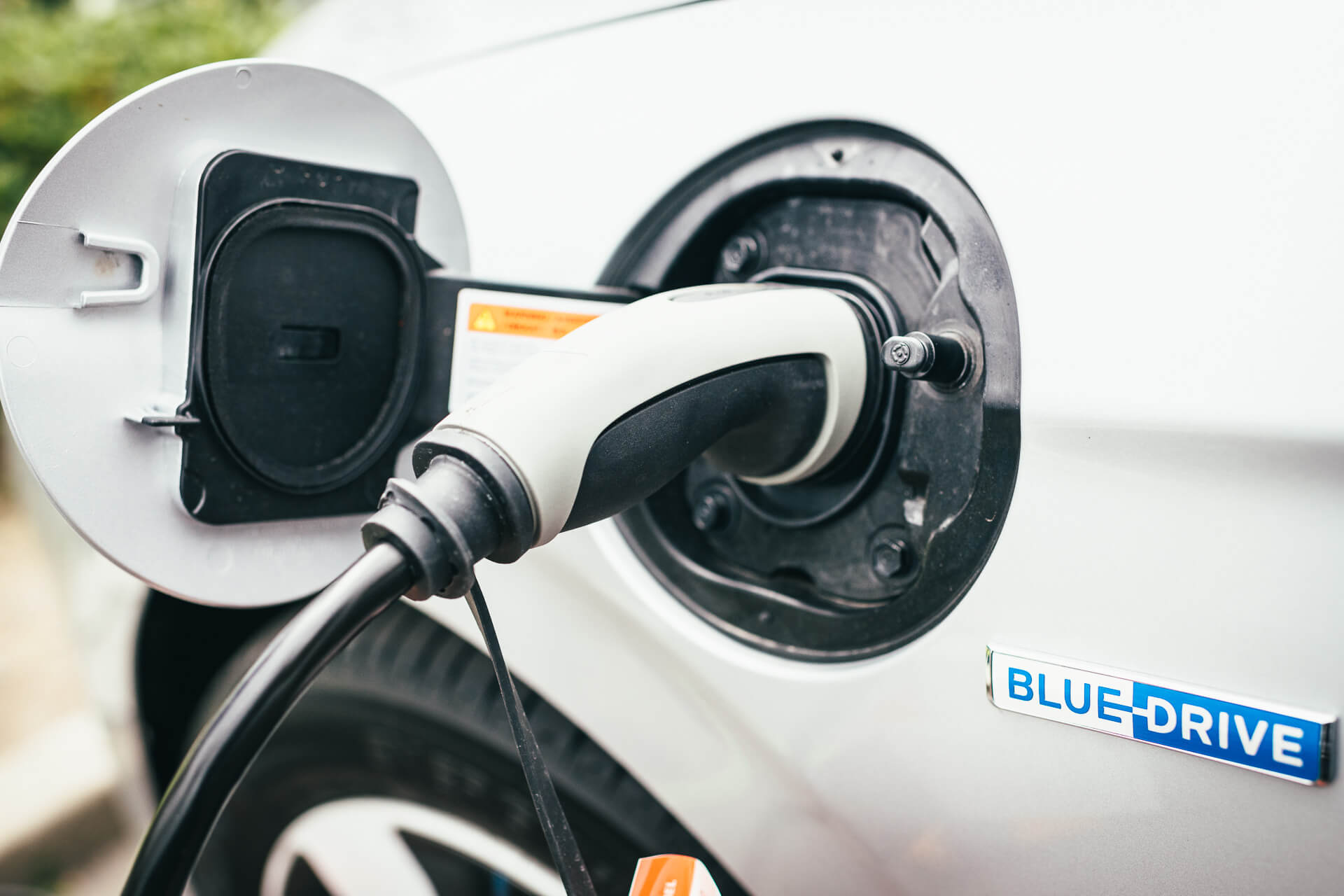Building an Electric Fleet:
For Rob Halsall and his employer Westpac, June will be a milestone month. That’s when the first tranche of electric vehicles is scheduled to arrive at Westpac, a turning point in the bank’s bid to transform its corporate fleet. What began with a trial of a handful of leased EVs two years ago, is on track to achieve the goal of a 30 per cent electric fleet by 2019.
As head of procurement for Westpac, Rob has led the charge – and it’s been quite a process.
“We had to look at our vehicle expiry profiles; we had to do market research with manufacturers and do test drives; we had to engage our HR colleagues and examine our corporate footprint in both the North and South Islands; and we had to look at what we could do with our infrastructure in terms of vehicle charging,” he says. “Since we committed to 30 per cent, everything has been geared to finding a pathway to get to that number.”
IS NOW REALLY THE RIGHT TIME TO GO ELECTRIC?
Drive Electric Chairman Mark Gilbert argues yes. “I don’t think we can defy gravity,” he says. “There’s a capex cost here, but when you are talking the equivalent of 30 cents a litre for electricity … Well, if I was a business owner, I would be challenging my procurement manager to take a serious look.”
But where do they start? Rob says that if someone had given him a ‘how-to’ guide back at the beginning of Westpac’s transition, it would have made life much easier.
“Every environment is different, of course, and there isn’t a single blueprint for success, but there are similar considerations that can be shared across most businesses.”
With the benefit of hindsight, the following six questions have been compiled to guide your decision-making process. They’re not necessarily straightforward, says Rob, and you’ll need to gather plenty of data. “But if you can answer these questions, then the case to go electric becomes compelling.”
IS NOW REALLY THE RIGHT TIME TO GO ELECTRIC?
This one is two-pronged. On the one hand, you need to gather some hard data; on the other, you need to consider your company culture and individual anxieties about EVs.
When Westpac made its commitment, Rob had to find a formula to electrify roughly a third of a fleet of 330-odd vehicles.
“We had to understand which cars were allocated as a tool of trade versus pool vehicles, because in the case of a tool of trade, obviously significantly more engagement is needed. At the very granular level, we had to understand the employee role type and role location, the distances typically travelled, and why they needed a vehicle in the first place. We have tech ninjas who travel to install hardware and software in our retail branch network – that’s a very different need than a relationship manager who has to visit a customer.”
But the analysis goes deeper than that.
Meridian Energy is on a similar journey to Westpac, albeit on a faster track. The Wellington-headquartered renewable energy company aims to convert half its passenger fleet to EVs by the middle of this year. So far it has deployed a mix of second-generation Nissan Leafs and late model all-electric Hyundai IONIQs and new generation 2018 Nissan Leafs, all owned rather than leased.
Procurement Manager Nick Robilliard says GPS data of how Meridian staff were using vehicles has been critical to making the right calls.

NICK ROBILLIARD
“It meant that we could make truly informed decisions, because we had detailed profiles. Your best friend in this whole process is having good GPS data and someone who can interpret and model it.” – Nick Robilliard
He began with some broad strokes. “You look at a set of vehicles and say ‘What’s the average trip distance? How many are over 100 kilometres, 200, 300? If most are in the first bracket, and just a few outside, well maybe you could operate some EVs and rent on demand now and then.
“The other thing that was helpful for me was to ask when pool vehicles were going out during the day. Were they all out at the same time? I looked at one of my offices and saw the cars weren’t actually out between 9am and 3pm. I realised people were putting all their sales calls at the front end and back end of the day so they could take the car home.”
For a corporate with multiple offices, location is another crucial factor. Where are your vehicles based, and does that deployment still make sense? “I found that I didn’t actually need half the cars that were in one particular office, and that actually an EV car-share was the better option,” says Nick, who chose to use electric car sharing outfit Yoogo as backup when needed.
Some potentially unpopular decisions may need to be made. “Do you give your sales people the right to take their car home? You start unravelling some of those things that might be a bit more prickly and contentious.”
Which brings us to that second part of the employee equation: culture and mindset. Foisting electric vehicles on unwilling staff is not a recipe for a successful transition.
Mark Gilbert points out that among some people, the company car is still regarded as a status symbol. “There’s all that emotional baggage that comes with a vehicle.”
Another complication – at least for now – is range anxiety. Some people just can’t get over it, and are probably best left with a petrol vehicle. For most employees, however, the best solution is to give them more information.
At Meridian, they journey-planned and tested routes to ensure there was access to public fast charging before adding EVs to the fleet. Employees were also given the opportunity to test drive the vehicles, watch training videos and access educational tools to help them become comfortable and familiar with the new product.
“Taking people on the journey was really important,” says Nick, who adds that Meridian had inbuilt advantages in that regard. “We’re a company full of engineers who are naturally curious.”
Geoff Tipene is managing director of SG Fleet New Zealand, which stands out among fleet management and lease firms for its proactive approach to EVs. From Geoff’s experience of helping corporates to transition their fleets, employee apprehension tends to melt away when they drive an EV.
“No one is dragged out of their car and given an EV; it’s softly softly,” says Geoff. “And as soon as they drive one, the conversation is over.”
2. WHAT DO YOU NEED TO KNOW ABOUT YOUR FLEET?
“There’s never a perfect moment,” says Rob Halsall of Westpac’s transition to electric. “Technology is going to change, infrastructure is going to change. But we had to make a move, because we had expiring leases. You can’t just hold off and hold off, and not give your staff new cars.”
For most New Zealand companies, their lease profiles will be critical to timing.
Rob sums up the considerations: “What’s the profile in terms of operating lease expiry? Are they expiring in the next three, six, 12 months? Can you leverage that expiry profile? If you have to let some of your vehicles go beyond their end-of-lease life, it could mean an increased health and safety risk and you could also be charged for excess kilometres. So understanding your fleet profile is key.
“You also need to think about the number of vehicles by location and type, and whether you are talking about pool cars or tool-of-trade vehicles. It’s arguably easier to make the call to transition in the case of pool cars, but you will probably need some data to know when and where the pool cars are being driven.”
How did Westpac handle it? “We looked for an opportunity to maximise the acquisition opportunity, which involved looking at all the lease expiry profiles. So, rather than buying our EVs in smaller amounts, was there an opportunity to do a bulk buy and maximise that relationship with the third party?”
Meridian’s case was a little different. It owns rather than leases its vehicles. That allowed Nick Robilliard more freedom to make the big calls, with fewer internal stakeholders to persuade and more flexibility around timing.
“The way that you procure and manage your vehicles will affect how agile you can be about transitioning to electric,” he says.
He was also able to ask a more fundamental question. “I asked, ‘Why do we buy brand new vehicles?’ For a lot of the around-town functions, where people aren’t doing huge kilometres, why would I put a brand new vehicle there?”
His conclusion was that there was no good reason, and so as a transitional step he bought some two-year-old Nissan Leafs. Even though the new IONIQs cost more than their non-electric equivalents, the money he saved on the Leafs more than compensated.

“I actually spent less electrifying the fleet.”
Owning rather than leasing also allows him more freedom about when to replace Meridian’s current EVs – a significant advantage, given the pace of development.
“It gives you the ability to say ‘I might only hold these vehicles for 18 months’. The good news then is I can put them into the second-hand market and make it easier for consumers to access EVs.”
3. VEHICLE SELECTION:
WHAT DO YOU NEED TO KNOW TO CHOOSE THE RIGHT EV?

Let’s not fudge it: New Zealand has always been a technology taker when it comes to vehicle selection, and it’s no different for EVs.
“At the moment, we have limited options,” concedes Mark Gilbert. “But each month, each year, there are more and more; by the end of next year, there will be 100 more EV models available, so we can expect to have a lot more choice.”
Whether Kiwi vehicle dealers are particularly knowledgeable about, or committed to, the new technology is another matter. “They’re all trained in a transactional way, not in terms of quality of sale or things like total cost of ownership,” he says. “We need a paradigm shift there so consumers can start getting some accurate and transparent information.” (EECA’s website www.electricvehicles.govt.nz is a great source of advice in this regard.)
Businesses are going to need to tap various sources to make sure they end up with electric vehicles that suit their needs. Fleet management companies, for instance. “You’re paying them a fee, so get them to do the job,” says Geoff Tipene. “And you really need to get out there and drive these things. Call the BMWs, the Hyundais, the Audis, and get them to talk about their vehicles. They’ll happily do it.”
But again, the mainspring for vehicle selection is knowing your staff, your fleet and your business needs inside-out.
Rob Halsall accumulated six months of GPS vehicle tracking data from 40 Westpac vehicles before he made any decisions. “It gave us some really rich data and helped us to understand not just how much cars were being used, but when, and by role type and location. For us, it was critical.”
There’s a caveat here, though. “If you want to invest in GPS and telemetry, you also have to look at your vehicle leases. Typically, you’d lease for 45 months, but you can’t wait four years to make decisions based on the GPS data you gather – it just defeats the purpose. You need to look at whether you introduce 24-month leases so you can act on that data.”
(If you can’t have GPS onboard gathering live data, he adds, then you should at least do some calculations based on odometer readings versus vehicle manufacturers’ range specifications.)
Rob says he closely analysed Westpac employee roles, whether they were metro- or regionally-based, and so on. Some of the bank’s agri-business reps who routinely visit remote customers were clearly not in the running for an EV, or even a petrol hybrid. Others were very much in scope.
“We mapped all of our data against the specifications of the preferred vehicle options – because if that vehicle can’t do the required range, and if you can’t get access to public charging infrastructure in the area, it will be a challenge.”
In the end, and based on several factors, Westpac opted for Hyundai IONIQs, including some hybrid petrol vehicles for staff working further afield.
At Merdian, by contrast, Nick Robilliard’s decision making began with ruling out a non-fully electric option. “We made a business decision and a marketing decision that we wanted to be 100 per cent electric, to align to our DNA as a 100 per cent renewable energy generator – which, of course, restricts what you can use.”
He then turned to the data. “You start segmenting your fleet into logical pieces, looking for the low-hanging fruit. It gives you a good sense of where you can set meaningful, achievable targets for the business.
“You say ‘What’s the profile of the user? Is it someone doing door-to-door sales inside the metro area, and never going out of town?’ In that case, the Nissan Leaf is absolutely fit for purpose.’”
Optics and serviceability were other considerations. “There are some higher end products out there, but the badge on the front makes a difference for us. Also, we drive our cars in the middle of nowhere, and if things go wrong, we don’t want to have to send them all the way to Christchurch to get fixed.”
For staff doing longer open road trips, he chose the Hyundai IONIQ, too – although there was a small gamble involved, given it only has a 180-odd kilometre battery range.
“I was banking on a whole lot of public charging infrastructure landing on our key route [the 330-kilometre trip between Christchurch and Twizel]. So I kept pretty close to Alpine Energy and ChargeNet, asking ‘When do these things become live?’, because that was critical to making this work for us. Now there are eight 50kw DC chargers on that route!”
(An added benefit of running EVs on this route is that drivers are forced to take a break, he says, reducing the risks associated with driver fatigue.)
Nick describes these early purchases as a “stepping stone” towards electrifying Meridian’s fleet. The next step will involve replacing the early generation Leafs with the latest model, which conservatively has a range of 300 kilometres.
“Now we’re in the game and we can start feeding product to staff that’s a bit more fit-for-purpose, such as the new Leaf. We will get more targeted and make the user experience top-notch.”
4. TOOL OF TRADE OR POOL VEHICLE?
WHAT YOU NEED TO CONSIDER.
As mentioned, it tends to be easier to transition pool vehicles to electric.
“They may have a single budget-line owner, and typically, there are also fewer of them,” says Rob. “If you’re looking for quicker opportunities to convert, you could look at the pool as a starting point.”
There’s also a consideration of employee emotion here: people tend to be far more invested in the decision to convert when it’s their own tool-of-trade vehicle involved.
“When you’re introducing EVs, you’re introducing change and that can be tough, especially in larger organisations. It can take people time to understand the opportunity. The pivotal thing we did at Westpac was to bring in a number of electric vehicles to test drive as part of the change – and that needed to be done. We wouldn’t have got some of the decisions made without getting people to experience what it was like to drive one of these cars. And we learned as much as they did; it helped to make the decisions much easier when it came to choosing our vehicles, because we had all that staff feedback.”
Again, having accurate utilisation data is going to be vital, and you’ll need it for both pool and tool-of-trade vehicles. For Westpac, drilling down into vehicle usage had the added benefit of allowing it to rationalise its fleet.
“You may find you actually don’t need a replacement vehicle, so it’s not necessarily a like-for-like swap,” he says. “The question you need to ask is, ‘Are you justifying enough kilometres to refresh a pool vehicle?’ If the answer is yes, then you ask yourself can it be 100% battery electric vehicle or a plug-in hybrid EV (PHEV)?”
Like Meridian, Westpac also looked at the possibility of using on-demand electric car sharing services, and even considered a collaborative consumption model with an operator.
“Once you start converting your fleet, you do have that decision to make about whether you actually refresh, or is there an alternative service you can use? But for us, that is more of an opportunity for the next phase.”
5. WHAT ABOUT CHARGING INFRASTRUCTURE?
Vehicle selection is the fun part, but sorting out charging infrastructure is where procurement managers really earn their keep. In Nick Robilliard’s case, he had an edge: he already manages Meridian’s offices and facilities, which meant one fewer stakeholder to manage. What’s more, Meridian is in the electricity business. Yet equipping it to charge an electric fleet wasn’t without challenges.
“In our case, each office site was unique,” he says. “One we owned; one was a brand new build, so I got in early; and one was only recently built. We scoped them all out, with the idea of supporting office-based charging with public charging infrastructure.”
What did he find? “The cost to put in chargers varied massively according to the site, and the reasons for that are a whole other consideration. Every site will have a different power provision to it. What capacity do you have on your [power] board? How far is it from the board to the carpark you want to provision? Are you putting in AC or DC three-phase? How you answer those questions can mean the difference between spending just a few hundred dollars and spending far more. In one case, I had to spend $20,000 to run a whole new power cable because there wasn’t enough power, and the reality is you need to provide some headroom for the future.”
In other words, you’ll need to ensure you have adequate power supply options and to understand your building infrastructure before beginning to consider charger options. If you lease premises, then you’ll need to come to an arrangement with your landlord and fellow tenants.

“How does your landlord feel about it? It’s an improvement to their building, so are they going to make a contribution? Are you going to separately meter the power? Who’s paying for the power? So there’s lots to consider here, and the property side really has the potential to trip some people up.”
That’s been the experience of Auckland-based Watercare, another of the organisations to make the 2016 electrification pledge. Sustainability manager Roseline Klein says Watercare committed to converting 30 per cent of its 12-vehicle headquarter fleet by late 2017, and the remainder by the end of this year.
But when it came to fitting its leased corporate HQ in Newmarket with chargers, the process proved trickier than anticipated.
“We didn’t realise we could exceed the power provision of the building by retro-fitting charging stations in the basement – we didn’t with the current five chargers [four slow, one semi-rapid], but we will with the final eight. We also didn’t realise we’d have to do a full shut-down of the building when we installed them – and we’re not the only tenant. And the last thing was the availability of installers – we had major delays there.”
There are no regrets, she adds. “We’re going to keep electrifying, but you do need to do your preparation work. This is not just the usual fleet replacement job plus a few plugs.”
The New Zealand Transport Agency (NZTA) is another organisation involved in fleet conversion. While the agency says it’s too early to share any lessons yet on the charging question, it will be making a tool kit available for fleet managers in the future to help support and encourage their move to EVs.
Rob Halsall agrees, again stressing the importance of gathering good data to avoid infrastructure hiccups. In Westpac’s case, they took utilisation and vehicle range data and compared it against the locations of public charging stations.
“It helped us to identify the Westpac buildings where we needed to invest in charging infrastructure. That’s critical, because you can’t necessarily rely on public charging.”
ANOTHER ISSUE IS CHARGER CAPACITY AND TYPE.
HOW DO YOU CHOOSE?
At Meridian’s main offices, Nick opted for a combination of AC 7.2kw single-phase pod chargers (“the longest it takes them to charge is eight hours, but usually you only need two to four hours when the cars come back in”) and DC three-phase 22kw fast chargers capable of recharging a battery to 80 per cent in 60-90 minutes.
“In the future, we’ll almost exclusively be rolling out the 7.2kw AC pods. They’re great value for money, and they don’t take long to get you back to 80 per cent charge, which is where you need to be. And of course, you can set them to charge overnight during off-peak and get a lower price.”
As mentioned, Meridian also uses a network of fast-charging stations on its key South Island route. Other businesses may need to consider access to public charging before making any decision about the type and number of chargers to install.
Drive Electric’s Mark Gilbert notes that apps such as PlugShare can tell you precisely where to find charging stations on any route. “You do have to journey-plan,” he adds, “but people will very quickly get in tune with that.”
Finally, what about home charging? “If you’re going to roll out EVs to employees who aren’t near a corporate building, then you need to decide if they can charge from home,” says Rob. “You have to consider the health and safety aspect, and whether that person has offstreet parking. If someone is living in an apartment, this could be a challenge. Home charging also requires a different consideration of charger type.”
If staff are able to charge at home, you’ll need to sort out who pays the bill, not only for the power used, but also, potentially, to install a specialised charger. In Meridian’s case, only one employee takes his EV home, and he pays for the charging in recognition of that privilege, says Nick.
Other businesses will have a different attitude. “It may be that there’s an obligation on an employer to fit out a house and pay for it all. But what happens when the employee finishes at the company? Do you rip it all out? It can get complex.”
If staff are to be reimbursed for home charging then you may need to install smart chargers to accurately divvy up the cost. On the subject of smart charging, however, Nick sounds a cautionary note. “I’m mindful that that technology is moving very quickly,” he says.
6. DO THE NUMBERS STACK UP?
First, the obvious: at least for the moment, it’s going to cost you more upfront to buy a new EV than its non-electric equivalent. When Nick was looking at the IONIQ, he knew he’d have to spend $15,000 more per vehicle than if he bought a similarly sized diesel alternative. Even so, by rationalising the fleet and investing in those second-hand Leafs, he was able to begin Meridian’s transition and come out ahead financially.
That won’t be possible for everyone. So how do you make it stack up?
Westpac’s situation involved a leased fleet. Before making any big decisions, they completed in-depth, whole-of-life financial modelling, taking into account key components such as operating lease terms and run-rate costs; potential break fees; business disruption costs; FBT implications; the price of electricity versus fuel; and predicted cost of setting up charging infrastructure in year one.
“Collaborating with our Properties function was also critical; in our case it is an absolute partnership approach to deliver the required outcomes,” he says.
The conclusion? “When you do the maths, there’s a realisation that you may be paying more for an EV, but less for its fuel and maintenance – so, there are pluses and minuses,” he summarises. “But if you get your modelling right, you can create a compelling value proposition.”
His point needs stressing. Yes, EVs may be more expensive upfront. Against that, you’re only spending an average 30 cents a litre to keep them running. And with fewer than 30 moving parts, maintenance costs are negligible.
In other words, you need to consider total cost of ownership in a new light when you are talking EVs.
One helpful tool to consider in the first instance is EECA’s total cost of ownership for vehicles tool, which helps fleet managers to compare the cost of buying, running and on-selling new vehicles, including fully electric. (See www.eecabusiness.govt.nz). The tool has default data, and users can customise it to reflect their price discounts, driving patterns and finance and tax circumstances.
But what about the ‘in the field’ experience of those who have already converted to EVs?
Based on fleet management data, Nick Robilliard calculates average $15,000 operating expenditure for his non-electric vehicles over three years – which happens to be the premium he paid for those IONIQs over and above the non-electric alternative.
“Effectively, I make back my capital through having next-to-no operating costs, because in three years I might perhaps have to pay for a new set of tyres. Of course, you also have to account for the cost of charging, but we power our own sites, so I get that for nothing.”
Yet until now there has been a very sizeable unknown in the financial argument for EVs. “The risk left for everyone,” says Nick, “is what is the residual?”
With EV technology developing so rapidly, particularly in terms of charging time and range, will resale values hold up?
Nick wasn’t sure, so in April 2018 he tested the resale market for one of Meridian’s 2017 IONIQs. The results were extremely heartening. “After 14 months of ownership, we retained 87 per cent of its original purchase price. This compares favourably against the vehicles we would usually have purchased, where 70-75 per cent of value is retained.” (Residual data provided by CustomFleet NZ for Hyundai i40 CRDi and Hyundai Tuscon CRDi respectively.)
What’s more, the operating costs (including charging, vehicle management, service and registration) amounted to just 10-12 per cent of the cost of the baseline equivalent internal combustion engine vehicles owned by Meridian.
“It cost us $695 per annum, while our Hyundai i40s and Hyundai iX35s ranged from $6000-$7000. The IONIQ incurred effectively no workshop service or maintenance costs.”
What’s the long and the short of it? The statistics vindicate the company’s decision to transition to EVs. “It is a very good result,” says Nick.
CONCLUSION
So, those are the six crucial questions you’ll need to answer. The advice of those who have begun the electric journey? In summary: know how your fleet is being used; figure out early on if electric fits your culture; understand what would change in the way you manage your fleet; take advantage of any opportunity to rationalise vehicle numbers; and don’t take the charging infrastructure requirements lightly.
But this is not just a question of numbers. Consider, too, that New Zealand’s commercial and government organisations have a vital role in ushering in an electric vehicle future. It’s a matter of leadership.
As Geoff Tipene says, “There’s a common acceptance that this is what corporate New Zealand wants to do – they’re committed.”

Matt Philp – Author
Matt Philp began his feature writing career at the New Zealand Listener, and was a senior writer for Metro, The Press and North & South. Now a freelancer, he writes on architecture, lifestyle, business, heritage and travel for several New Zealand magazines.
SPONSORS



